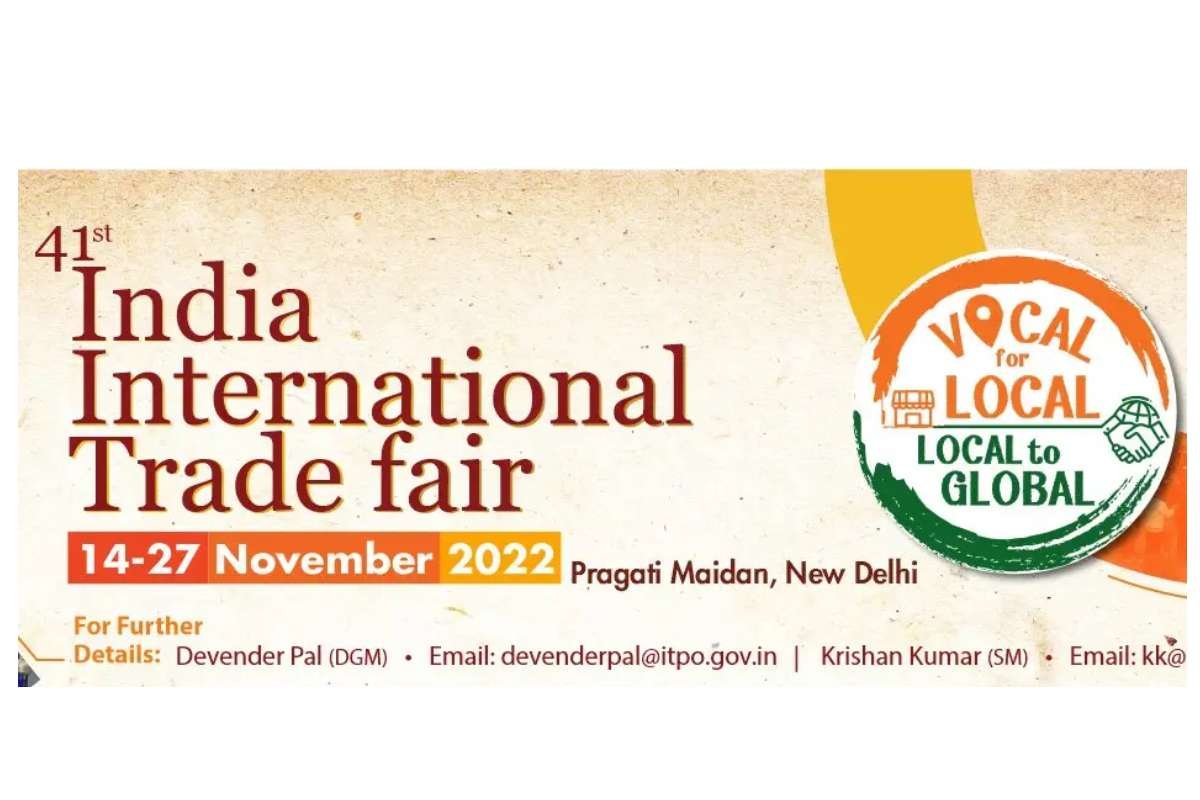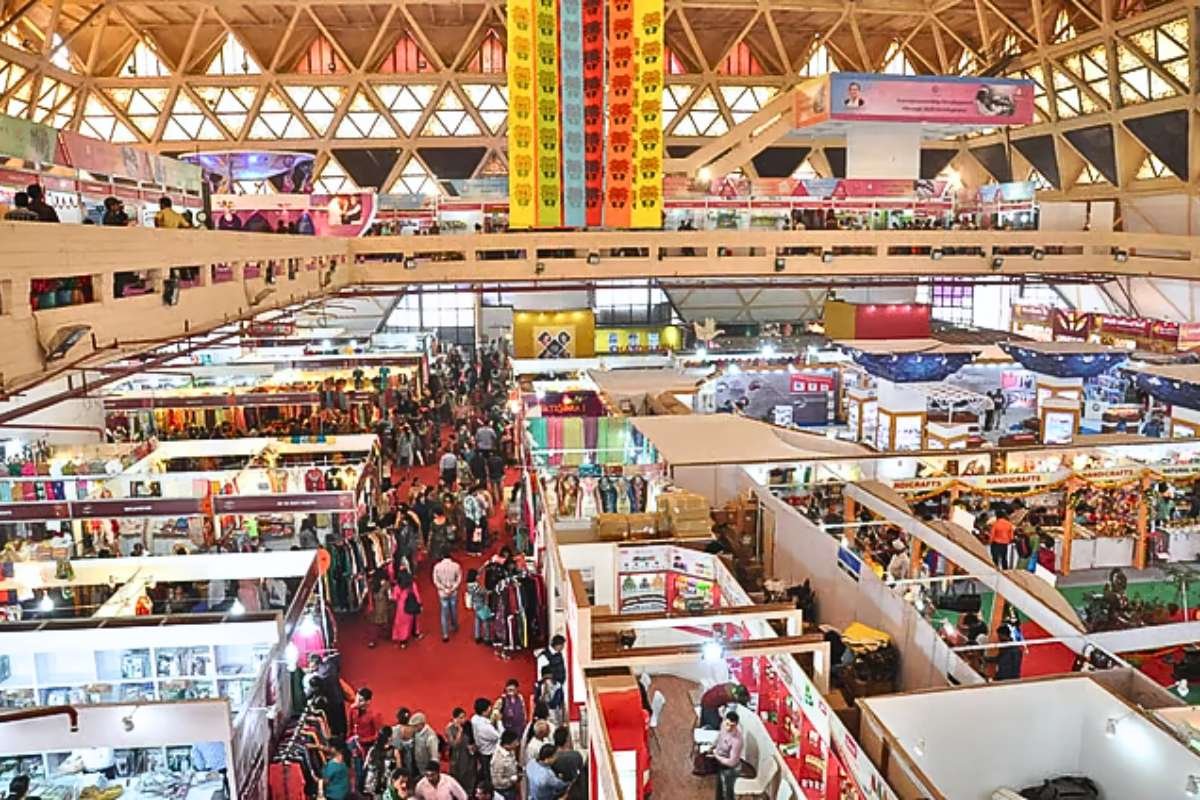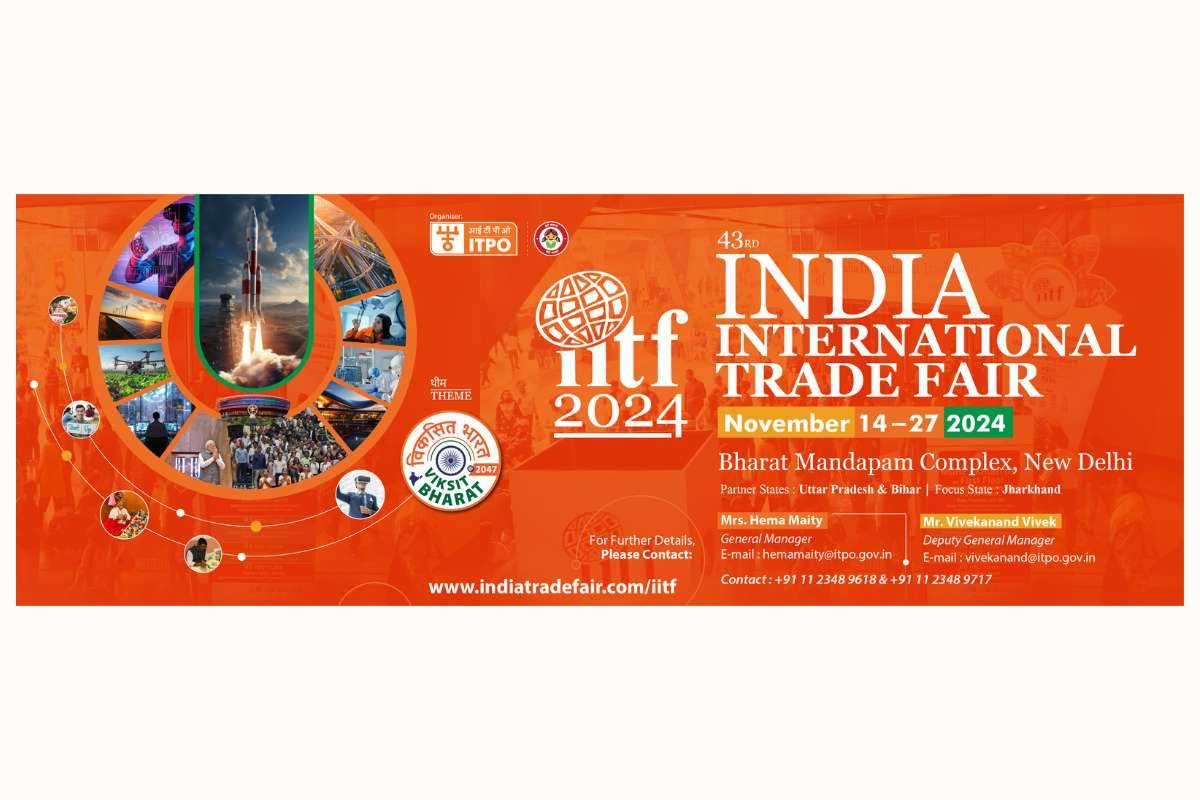
Source: Image by rcphotostock
The India International Trade Fair (IITF), an annual spectacle held at Pragati Maidan in New Delhi, is far more than just an exhibition; it’s a vibrant microcosm of India’s diverse economy, a powerful engine for trade promotion, and a unique cultural exchange. Since its inception in 1980, the IITF has evolved into one of the largest and most significant trade fairs globally, drawing millions of visitors and thousands of exhibitors from both India and abroad. Held consistently from November 14th to 27th each year, it offers a crucial platform for manufacturers, traders, exporters, and importers to connect, collaborate, and drive economic growth.
A Legacy of Growth and Global Reach
The IITF is organized by the India Trade Promotion Organisation (ITPO), the nodal trade promotion agency of the Government of India. Its origins trace back to the merger of various government trade promotion bodies, solidifying its mandate to boost India’s exports and facilitate international trade. Over the decades, the IITF has become a bellwether for India’s economic progress and its increasing integration into the global marketplace.
From its humble beginnings, the fair has expanded significantly in scale and scope. Early editions saw robust participation, and by the 26th edition in 2006, it boasted around 7,500 national and 350 international exhibiting companies, attracting over 3 million general visitors and 275,000 business visitors, including 91 delegations from 53 countries. This remarkable participation underscores the fair’s growing international appeal and its role as a key convergence point for global trade.
The redevelopment of Pragati Maidan, including the impressive Bharat Mandapam, has further elevated the IITF’s capacity and stature, transforming it into a world-class exhibition-cum-convention center capable of hosting events of significant international magnitude. This infrastructure upgrade reflects India’s ambition to be a global hub for trade and MICE (Meetings, Incentives, Conferences, and Exhibitions) tourism.
IITF at a Glance
- Established: 1980
- Organizer: India Trade Promotion Organisation (ITPO)
- Venue: Pragati Maidan, New Delhi
- Dates: Annually, Nov 14th – Nov 27th
- Scale (2006 Data Example):
- Exhibiting Companies: ~7,500 National | ~350 International
- Visitors: 3M+ General | 275K Business
- International Delegations: 91 from 53 Countries
A Thematic Journey Reflecting India’s Aspirations
Each year, the India International Trade Fair adopts a specific theme, reflecting India’s national priorities and showcasing its developmental journey. These themes serve to highlight key industry sectors, government initiatives, and national aspirations. For instance, the 2013 IITF focused on “Inclusive Growth,” with Bihar as a Partner State and Japan as a Partner Country. More recently, the 43rd edition in 2024 embraced the theme “Vocal for Local, Local to Global,” emphasizing the promotion of indigenous industries and their expansion into international markets.
This theme resonated deeply with the government’s “Aatma Nirbhar Bharat” (Self-Reliant India) initiative, aiming to foster self-sufficiency and global competitiveness for Indian products. Another recent theme, “Viksit Bharat in 2047,” showcased India’s vision for a developed nation by its centenary of independence.
These thematic focuses not only guide the exhibits but also influence the discussions, seminars, and cultural programs held during the fair, providing valuable insights into India’s economic trajectory and policy directions.
Evolution of IITF Themes

Source – krishijagran.com
- 2013: Inclusive Growth
- Recent (e.g., 2024): Vocal for Local, Local to Global (Aligns with Aatma Nirbhar Bharat)
- Future Vision: Viksit Bharat in 2047
A Diverse Showcase: From Handicrafts to High Technology
The sheer diversity of products and services on display at the India International Trade Fair is one of its most captivating aspects. Visitors can explore a vast array of categories, including:
- Traditional Crafts and Textiles: A major draw is often the vibrant display of India’s rich cultural heritage, with artisans from various states showcasing intricate handicrafts, handlooms, jute products, and traditional garments. These pavilions offer a glimpse into India’s diverse craft traditions and provide direct market access for artisans.
- Consumer Goods: From household and kitchen appliances to processed food, beverages, cosmetics, and healthcare products, the fair provides a comprehensive overview of the consumer market.
- Industrial and Commercial Products: Automobiles, pharmaceuticals, chemicals, telecommunication equipment, and offerings from the power sector are also prominently featured, demonstrating India’s industrial capabilities.
- State and Union Territory Pavilions: A unique feature of the IITF is the dedicated pavilions for each Indian state and Union Territory. These pavilions are instrumental in showcasing the distinct cultural heritage, tourism potential, and specific industrial strengths of different regions, often acting as a bridge between local producers and national/international markets.
- International Participation: The presence of exhibitors from numerous foreign countries, including China, Egypt, Iran, South Korea, Sweden, and the UAE (as seen in recent editions), transforms the IITF into a truly international marketplace. These international pavilions facilitate cross-border business interactions, foster collaborations, and introduce Indian consumers to global products and innovations.
The India International Trade Fair is a melting pot where indigenous products meet global standards, and traditional craftsmanship intersects with modern technology. It’s a testament to India’s “unity in diversity,” presented through the lens of commerce.

Source- english.punjabkesari.com
- Arts & Culture: Handicrafts, Handlooms, Traditional Garments
- Consumer Essentials: Home Appliances, Food & Beverages, Cosmetics, Healthcare
- Industrial & Tech: Automobiles, Pharma, Telecom, Power Sector
- Regional Showcase: Products & Tourism from Indian States/UTs
- Global Innovations: Offerings from International Exhibitors (e.g., China, S. Korea, UAE)
Significance and Impact: More Than Just a Fair
The India International Trade Fair’s significance extends far beyond its role as a marketplace. It plays a multifaceted role in India’s economic and cultural landscape:
- Trade Promotion and Market Expansion: The primary objective of the IITF is to promote trade. It provides an unparalleled platform for businesses, especially Small and Medium Enterprises (SMEs), to showcase their products, identify new market opportunities, forge partnerships, and finalize business deals with both domestic and international buyers. It significantly aids in export promotion, allowing Indian businesses to connect with global markets and strengthen their position in international trade.
- Economic Catalyst: The fair has a substantial economic impact on New Delhi and the surrounding regions. It boosts the local hospitality, transportation, and retail sectors, generating significant revenue and temporary employment opportunities. Furthermore, by attracting a large influx of visitors and exhibitors, it stimulates local economic activity.
- Networking and Collaboration: The IITF is a crucial networking hub. It facilitates face-to-face interactions between businesses, government officials, industry leaders, and consumers. These direct engagements are vital for building trust, fostering long-term business relationships, and exploring avenues for collaboration, technology transfer, and joint ventures.
- Brand Visibility and Marketing: For participating companies, the IITF offers an exceptional platform for enhancing brand visibility and engaging directly with a targeted audience. It allows businesses to gauge market trends, gather feedback, and refine their marketing strategies.
- Knowledge Exchange and Innovation: The fair often includes seminars, workshops, and panel discussions led by industry experts. These sessions provide valuable insights into emerging trends, technological advancements, and regulatory changes, helping businesses stay competitive and driving industry-wide innovation.
- Cultural Exchange: Beyond commerce, the IITF is a celebration of diverse cultures. The state pavilions, with their unique handicrafts, cuisines, and cultural performances, offer visitors a vibrant experience of India’s rich heritage. The presence of international exhibitors further enriches this cultural tapestry, fostering cross-cultural understanding and appreciation.
- Public Awareness and Education: Various government ministries, public sector undertakings, and non-governmental organizations also participate, using the platform to disseminate information about their schemes, policies, and initiatives, raising public awareness on critical issues.
IITF’s 7-Fold Impact

Source- indiatradefair.com
- Trade Promotion: Connects SMEs to global markets, boosts exports.
- Economic Boost: Drives revenue for local hospitality, transport, retail.
- Networking Hub: Facilitates B2B, B2G, B2C interactions.
- Brand Builder: Increases visibility, aids market research.
- Knowledge Exchange: Seminars, workshops on trends & tech.
- Cultural Showcase: Celebrates India’s diversity, fosters global understanding.
- Public Awareness: Platform for govt. initiatives & social causes.
Looking Ahead: The Future of IITF
As India continues its journey towards becoming a global economic powerhouse, the India International Trade Fair will undoubtedly evolve further. The integration of digital technologies, such as online ticketing, virtual tours, and enhanced digital platforms for exhibitors and visitors, will likely continue to improve efficiency and reach. The focus on sustainability, green practices, and showcasing eco-friendly products will also gain further prominence.
The India International Trade Fair remains a dynamic testament to India’s entrepreneurial spirit and its growing stature on the world stage. It is a powerful reminder that in an increasingly interconnected world, trade fairs continue to serve as indispensable catalysts for economic growth, cultural understanding, and global connectivity, truly embodying the spirit of “Vasudhaiva Kutumbakam – Unity by Trade.” Its continued success will be instrumental in India’s pursuit of a “Viksit Bharat” by 2047.
Comments on “The India International Trade Fair: A Kaleidoscope of Commerce, Culture, and Connectivity”